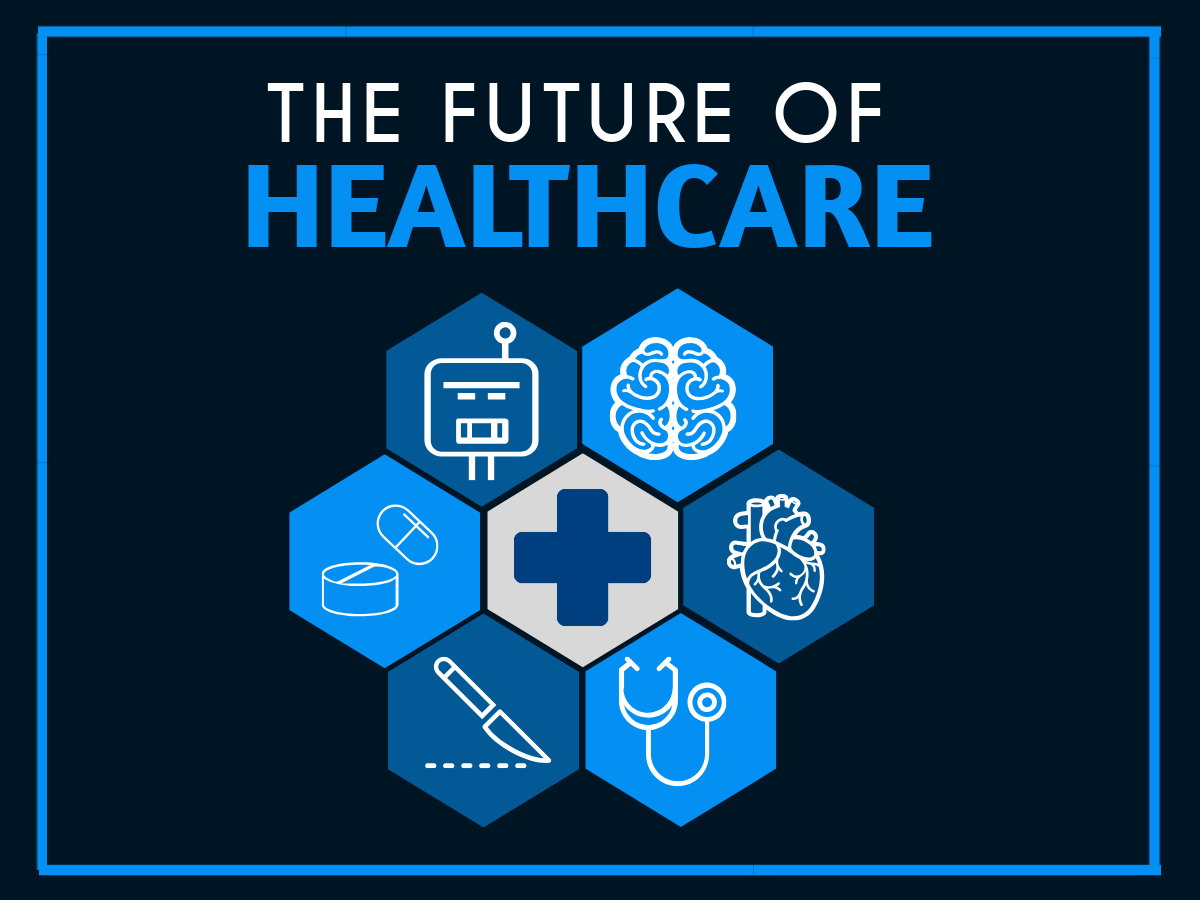
We are living in an age of rapid technological advancement, with transformative new inventions and discoveries changing the ways we experience our daily lives. Computers have experienced a trillion fold increase in processing power in the past 60 years, which has contributed to everything from the meteoric rise of smartphones to incredible advances in artificial intelligence and whole waves of other futuristic technologies.
The fields of health and medicine are no different. New discoveries and innovations could completely change the ways in which we fight disease, make diagnoses, and care for patients. Developments in artificial intelligence, robotics, and regenerative medicine mean we have powerful new weapons with which to protect our health, kill deadly diseases, and even extend our lifespans. Immortality could be closer than you think.
We’ve compiled this list of ten of the most important coming developments in healthcare and how you can expect these to transform the medical field. We’ve included real life examples so you can see exactly how close these developments are to reality, and what progress has been made so far.
Artificial Intelligence
Today, artificial intelligence is powering everything from household digital assistants like Alexa, to our social media newsfeeds, and self driving cars. Scientists have made extraordinary advances in areas such as machine learning, neural networks, and natural language processing.
These innovations allow computers to learn by analysing huge quantities of data, noticing patterns, and interpreting images and texts. This intelligence can then automate and speed up tasks, allowing for improved efficiency in a huge number of applications ranging from creating suggested playlists on Spotify to finding solar systems 2500 light years away.
Artificial intelligence is also improving healthcare, with machine learning meaning patient data can be better used in diagnosis and treatment. Algorithms can rapidly analyse vast quantities of medical data, including medical records, patient habits, and genetic information and use this data to improve outcomes for patients. Take a look at just some of the ways artificial intelligence is being used:
Improved Diagnosis
Diagnostics is one of the biggest areas in health AI, with a third of healthcare startups focusing on this field. Artificial intelligence could drastically improve patient outcomes by providing earlier detection of illnesses like cancer. It does so by detecting patterns across patient records and then making predictions and diagnoses based on this data.
AI is capable of analysing huge quantities of data in this way, allowing for reliable diagnoses based on a patient’s symptoms. In some instances, AI is now outperforming doctors at diagnosing life-threatening illnesses.
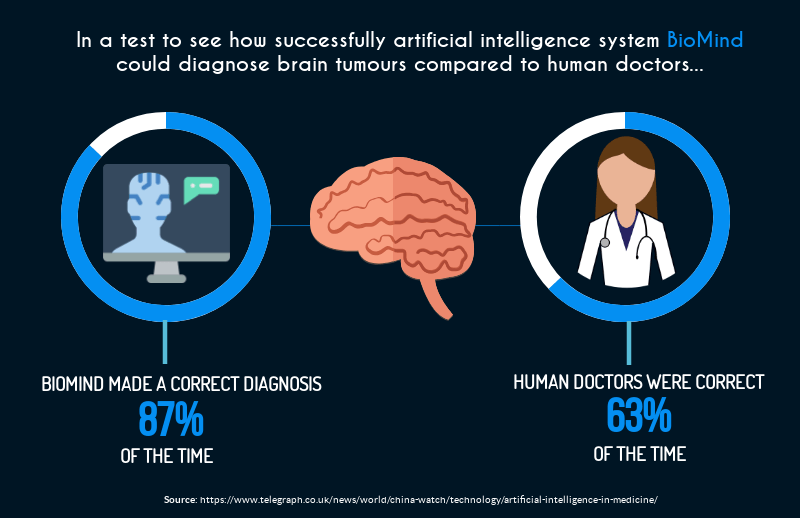
Artificial intelligence also allows for earlier detection of disease. For example, currently some cancers may only show symptoms and be detected when they’ve already progressed to an advanced stage, making treatment more complicated and expensive. On the other hand, artificial intelligence can detect symptoms and changes in health that indicate cancer before a physician might. An earlier cancer diagnosis nearly always creates a better prognosis for the patient, and it’s been predicted that AI could prevent thousands of cancer deaths in the UK by 2033.
Similarly, it’s been shown that AI could detect symptoms of Alzheimer’s through subtle changes in behaviour and sleep patterns, years before these symptoms would be noticed by a doctor or family members. This means treatment and care can be better planned, and patients can benefit from experimental drugs that could improve outcomes when used in the early stages of the disease. It’s even been shown that algorithms can successfully analyse brain scans to detect minute changes in brain tissue that indicate Alzheimer’s. In addition, AI can predict how severe the disease will become, meaning more personalised treatment plans can be created.
Image Analysis
Medical professionals currently spend a huge amount of time examining scans. It can take two hours to compare two 3D medical scans and figure out what’s changed. It’s a time consuming, painstaking task – but one that’s vital for successful treatment.
A research team at MIT has recently designed a machine learning algorithm that can examine scans up to 1000 times faster than is currently possible. This could make a world of difference in treating patients, as life-saving treatment can be administered more quickly.
It would also allow surgeons to see how well a procedure is going with real time analysis of scans – again, creating better outcomes for patients.
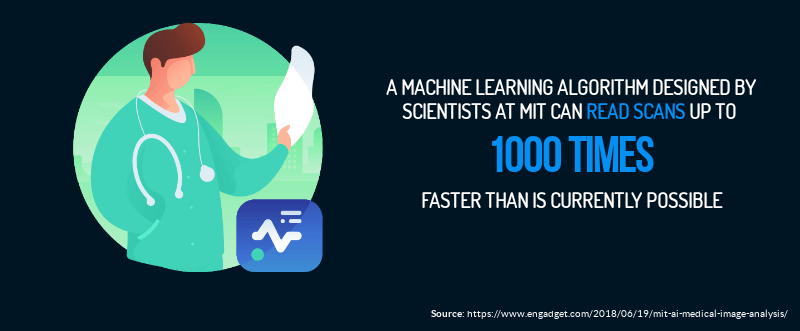
Drug Research
Designing and creating new drugs is a complex and time consuming process, with the vast majority of drugs failing during research. It can take 12 years for new drugs to reach patients, and costs on average $2.6 billion to develop a new treatment. This is due to the number of steps involved:
-
- Discovery and development: Researchers have to identify potential new compounds (of which there could be thousands), find new insights into a disease, and test thousands of potential drug candidates. Only 1 in 5000 compounds identified during this phase will eventually be approved as a drug.
- Preclinical Research: This step makes sure the drug is safe to use for humans, and doesn’t have any toxic or carcinogenic effects. This might involve animal testing and other trials.
- Clinical Research: Drugs are tested on human patients.
- Drug Approval: Once tested, the drug must be approved for therapeutic use by a government body.
-
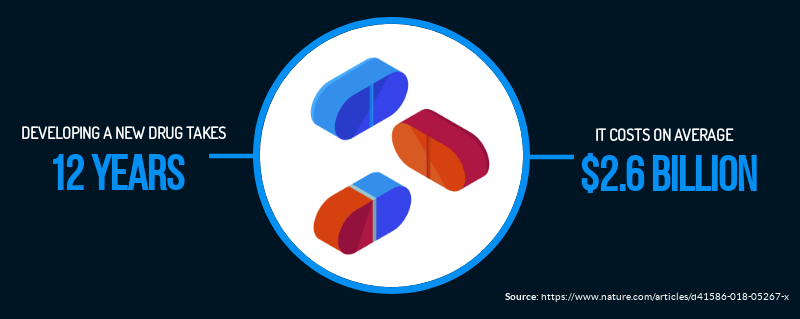
The use of deep learning could slash the time and costs involved in creating a new medicine.
Algorithms can analyse swathes of biological and chemical data to discover more about a disease, and identify potential drug candidates much more quickly than a human can. This might involve rapidly reading scientific papers and datasets, or assessing large amounts of medical data to find promising compounds and molecules. These algorithms can even predict the effectiveness, toxicity, and side effects of new drugs.
The end result is that the whole drug discovery process can be greatly accelerated, allowing life-changing treatments to reach patients more quickly than ever before.
Administration
Administrative tasks like filling in patient records, prescribing medication, and ordering tests currently take up a huge amount of time. However, natural language processing technology could help doctors and nurses by allowing rapid voice-to-text transcription of vital information, along with automation of other mundane tasks.
Administrative tasks like filling in patient records, prescribing medication, and ordering tests currently take up a huge amount of time. However, natural language processing technology could help doctors and nurses by allowing rapid voice-to-text transcription of vital information, along with automation of other mundane tasks.

Personalised Treatment
No person’s experience of an illness is exactly the same, and often people with the same condition will respond differently to medications and treatment.
However, the huge amount of data involved makes it difficult for doctors to adopt anything other than a generalised treatment plan. For people suffering from potentially deadly illnesses, this trial and error process can be the difference between life and death.
However, artificial intelligence can analyse patient data and scientific papers to predict an individual’s response to treatment, and suggest a personalised treatment plan that is most likely to be successful.
For example, researchers from The Institute of Cancer Research and the University of Edinburgh are currently exploring how AI can predict the evolution of a tumour, allowing oncologists to develop personalised treatment plans for cancer patients, and stay one step ahead of the disease.
AI Assisted Surgery
By using banks of surgical data, artificial intelligence can inform surgeons on best practices and make real time recommendations during surgery to improve outcomes. This can vastly improve outcomes, particularly in very complex and precise procedures.
Artificial intelligence can be combined with surgical robots for very precise procedures such as suturing blood vessels. Robots are controlled by a surgeon, and the movements are then converted into more precise movements, whilst the artificial intelligence stabilises any tremors intelligently and responsively.
Examples of Artificial Intelligence in Healthcare Today
Babylon Health
Babylon Health is a subscription service based in the UK that allows patients to video call doctors on demand. They’ve also created an AI powered chatbot that users can ask medical questions to at any time, and receive advice and a potential diagnosis. The app’s developers have claimed it has an accuracy on par with human doctors, having achieved an 81% result on the Membership of the Royal College of General Practitioners exam.
TwoXAR
TwoXAR is a drug discovery platform that utilises big data, cloud computing, and AI to find new drugs more quickly and cheaply than current methods allow.
Atomwise
Atomwise uses neural networks for more accurate and precise discovery. They’ve made amazing progress on drugs for illnesses such as Ebola and Multiple Sclerosis. Their software can screen between 10 and 20 million compounds in a single day.
Digital Surgery
Digital Surgery has the world’s largest library of surgical intelligence, allowing for better training of surgeons, fewer errors in procedures, improved surgical planning, and safer surgery and improved outcomes for patients.
Genome Analysis & Mapping
A genome is a person’s complete set of DNA and genes. Every single person’s genome is completely unique, and can provide information on their physiology, susceptibility to certain diseases and their response to specific drugs.
Better and cheaper DNA sequencing technologies mean we can now map genomes more easily than ever before. With enough data, we can use this technology to identify problem genes and potential health hazards, develop better treatments, and discover more about diseases. This could revolutionise healthcare, leading to the advent of truly personalised treatment based on genetic makeup. The best and most effective drugs can be more easily selected to match a person’s genome.
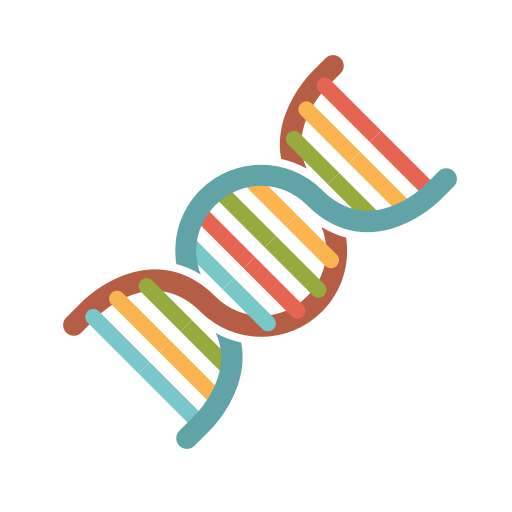
Genome analysis can also improve preventative medicine. If a doctor knows a person is susceptible to certain diseases, they can suggest precautions and lifestyle changes that will prevent the illness from developing.
An example of this is the BRCA1, or breast cancer gene. This gene can mutate and cause breast cancer; in fact, 72% of women with a harmful mutation will develop breast cancer by the age of 80. This often means breast cancer will be very common in families who carry this mutation. However, this gene can now be screened for, and patients who test positive can take precautions such as more frequent cancer screenings, or having preventative surgery such as a masectomy.
Examples of Genome Mapping in Healthcare Today
Personal Genome Project
This is a long term, large scale study that aims to sequence and publicise the complete genomes and medical records of 100,000 volunteers. The study began in 2005, with the ultimate goal of sharing data that is critical for scientific progress and medical research.
Nebula Genomics
Nebula Genomics offers advanced genetic sequencing for individuals, allowing them to access deep insights about their health. Participants have complete ownership of their data (which is stored securely using Blockchain), but can share data with medical researchers for compensation. This data can then be used in research to contribute to breakthroughs in the field.
Robotics
Robotics have been used in medicine for over 30 years, but their use is becoming increasingly advanced in the modern age.
Robots can improve surgical technique and precision, help with rehabilitation and physical therapy, and even improve end of life care by allowing people to stay independent for longer.
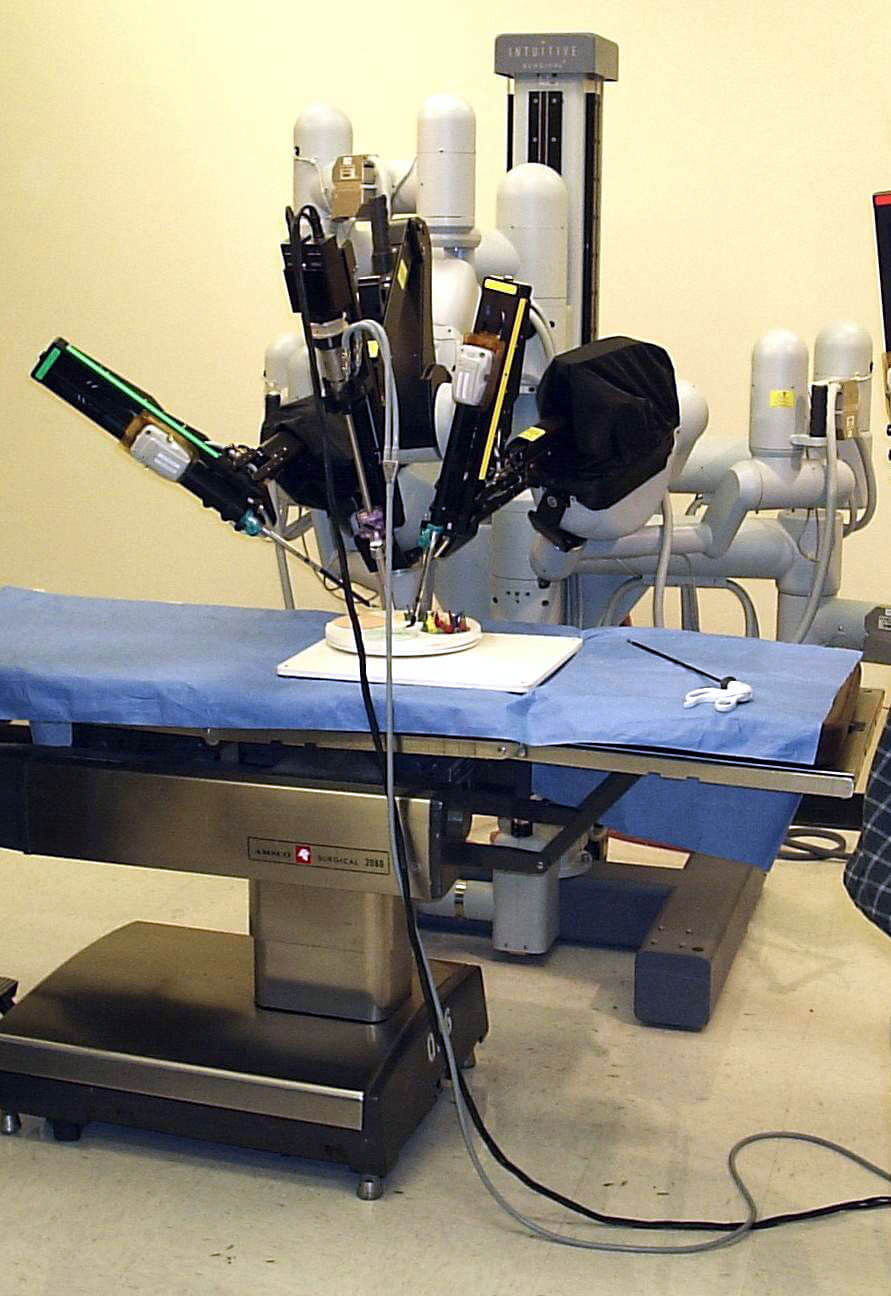
Laproscopic Surgery Robot
Examples of Robotics in Healthcare Today
Da Vinci Surgical System
This is a robotic system developed by Intuitive Surgical in 2000. It assists with delicate procedures, allowing complex surgeries to be undertaken in a minimally invasive way. The system has an advanced 3D magnified vision, and tiny surgical wrists with a greater range of motion than a human hand. These wrists are controlled by the surgeon.This means better precision, vision, and control for surgeons, meaning fewer incisions are needed and outcomes are improved for patients.
Senhance Robot Assistant
Senhance gives surgeons access to Digital Laparoscopy (often called keyhole surgery). Features include a digitised interface and eye tracking, for better intelligence and vision during a surgery. The surgeon can remotely control three robotic arms for precise and minimally invasive surgery. The system also includes haptic feedback, allowing surgeons to ‘feel’ how stiff tissue is.
Robear
Robear is a nursing care robot developed by RIKEN-SRK in Japan. This is an experimental (and very cute) robot that can carry out all sorts of clinical tasks, including lifting patients from beds and helping them to stand and walk. It’s powered by sensors which mean it can carry out tasks safely and gently when working with patients. This robot could reduce pressure on care professionals, who often have to lift patients out of bed 40 times every day.
Xenex
Xenex is a robot that uses high intensity UV light to thoroughly disinfect healthcare facilities. With 1 in every 25 hospital patients in the UK catching hospital acquired infections like MRSA, it’s clear that better hygiene is urgently needed. This robot can improve current processes and tackle this problem head on.
Origami Robot
This is an ingestible robot that can be used in stomach surgery. Once swallowed, the capsule containing the robot dissolves in the patient’s stomach and the robot unfolds itself. It can then be remotely controlled by surgeons to treat wounds in the stomach lining or safely remove foreign objects. Although not yet approved for medical use, in the future this will allow for much less invasive surgery and an easier recovery for patients.
Augmented Reality & Virtual Reality
Although they sound similar, augmented reality and virtual reality have some distinct differences:
- Augmented Reality: Adds digital elements to existing reality, using things like the smartphone camera. A popular example of an augmented reality app is Pokemon Go.
- Virtual Reality: Virtual reality technology creates fully immersive simulated environments, normally by using a headset.
As well as being hugely exciting for gamers everywhere, AR and VR also have interesting applications in the medical field.

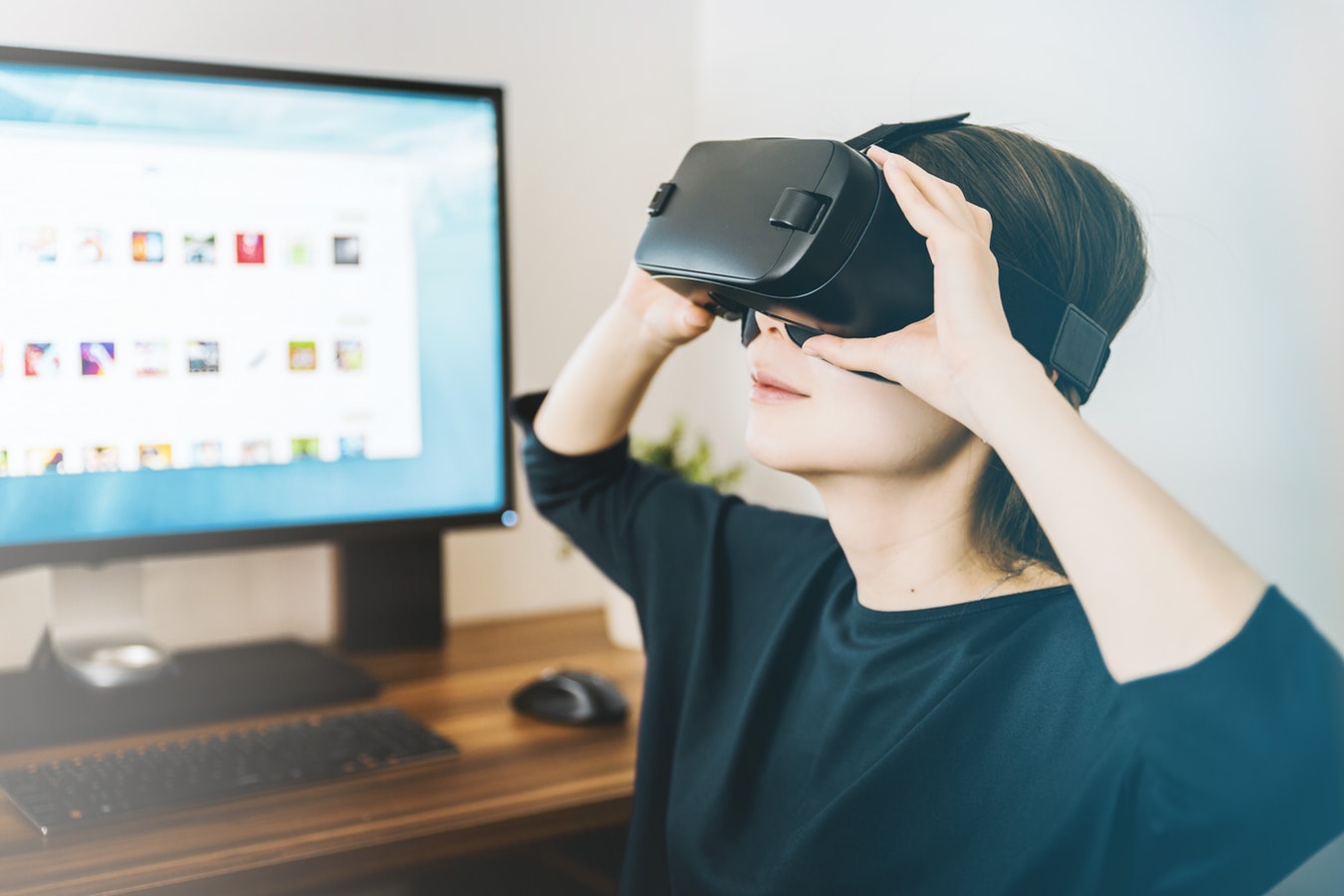
Virtual Reality
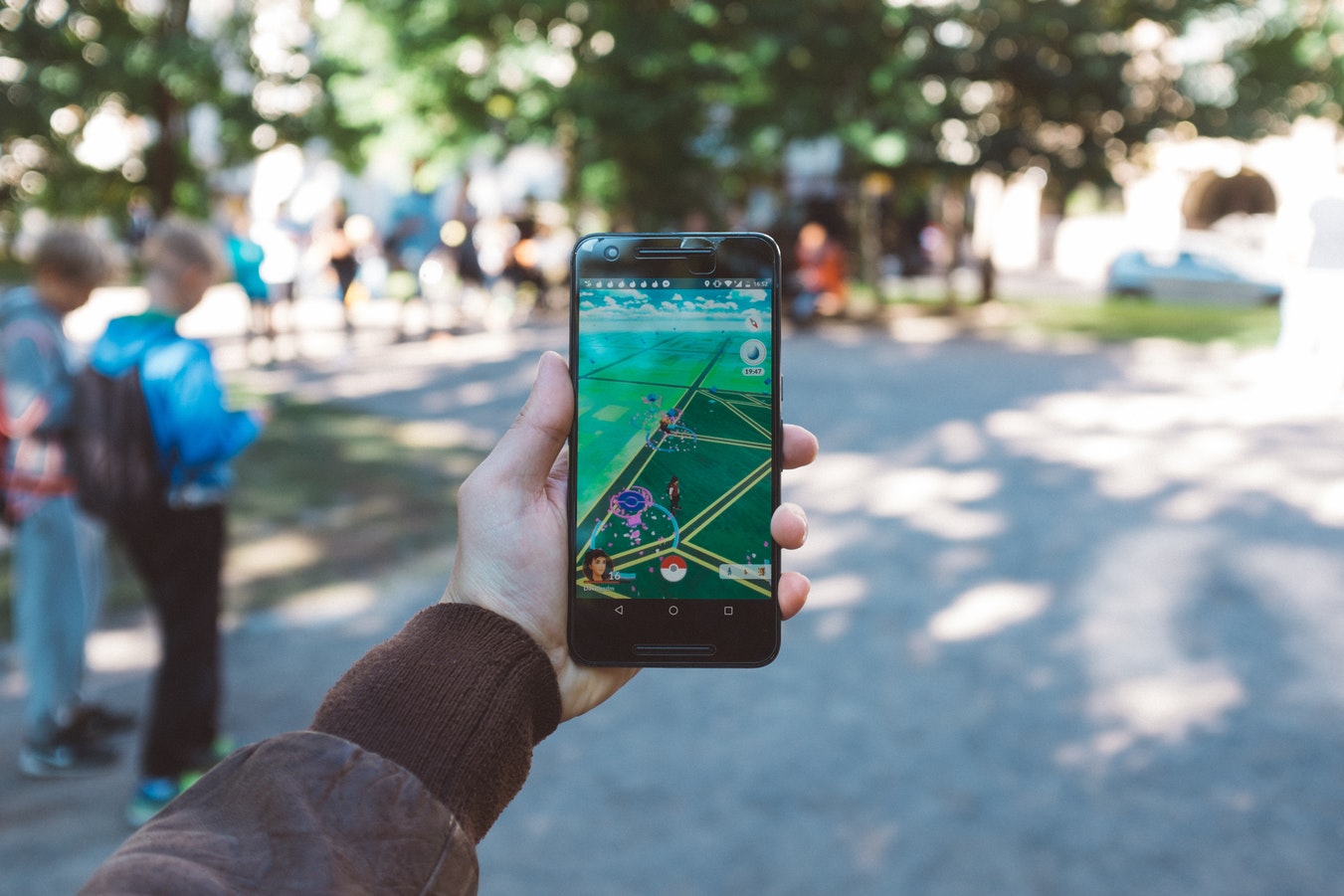
Augmented Reality
More Information for Physicians and Surgeons
Augmented reality can show surgeons how a procedure should be performed correctly, or how a treatment should be administered. Physicians can also access data and educational information on the go as they work.
Similarly, treatments can be improved by using AR powered body maps which can be displayed in real time.
Better Training for Medical Professionals
Both AR and VR can also be used when training surgeons and doctors, allowing medical students to interact with a 3D representation of a body.
Examples of AR & VR in Healthcare Today
Accuvein
Accuvein uses AR technology to display a map of patient veins in real time, assisting with procedures like drawing blood and inserting IVs.
Holographic Navigation Platform
Scopis have developed the Holographic Navigation Platform, which uses the Microsoft Hololens system. This has been designed for spinal surgery; the surgeon wears the Hololens and the system overlays a surgical map over the patient’s body. The system can also place virtual monitors into the surgeon’s line of vision, allowing them to focus fully on the surgery itself rather than having to keep looking away to check monitors.
Virtual Reality Surgery
In 2016, a surgery to remove cancerous tissue from a bowel was streamed live via 360 degree virtual reality video. This has valuable educational applications, allowing medical students and doctors to learn more about a particular surgery and what goes on in the operating room. It can also better educate patients on what will happen during their own surgeries.
Zombies, Run!
As well as assisting medical professionals, AR can help patients make better decisions about their health and promote lifestyle changes. Zombies, Run! is a more lighthearted example of this. This mobile app is designed to be used during running and simulates zombies chasing the user through sounds to encourage them to run faster at certain points. This makes fitness more fun, promoting a healthier lifestyle.
Health Sensors
More sophisticated and connected health sensors offer a whole wealth of opportunities for better monitoring and management of patient health.
Advanced Biosensors
In the near future, we can expect a whole range of highly advanced sensors to emerge, including:
- • Implantable sensors
- • Self powered sensors
- • Biosensors
- • Micro-electromechanical silicon
- • Nanosensors
These sensors will be able to make use of data gleaned from electrical currents, chemical attractions, light-detection systems, and chemical and physical health indicators. This means health can be monitored at a very precise level. Some sensors are already in use today, including blood oxygen monitors in hospitals.
The Internet of Things
Many sensors are now making use of the Internet of Things, which has been described as:
“an ecosystem of technologies that monitor the status of objects, individuals, and environments, capturing meaningful data, potentially interacting with each other, and communicating valuable information over networks to software applications that can analyze the data accurately and quickly to glean important information and trends”
Put simply, this means that professionals can make use of data from advanced health sensors in combination with wearable devices like FitBit and Apple Watch to monitor patient health remotely.
Well integrated health sensors could be a huge asset in the fight against chronic diseases, which account for a huge proportion of the money spent on healthcare. Wearable health sensors could even be used to send emergency notifications to patients and doctors.

IoT powered sensors could also be used in hospitals and similar facilities to manage inventories and organise services. Various devices and sensors can be integrated to achieve this; for instance, Radio Frequency Identification can be used to monitor how much of a particular medication is left in a hospital’s supply, and even reorder dwindling drugs automatically.
Examples of Health Sensors in Healthcare Today
HealthKit Development Platform by Apple
This new platform from Apple has the ability to aggregate data from apps and connected medical devices like glucose meters, blood pressure cuffs, and Apple Watch, allowing for holistic monitoring of a patient’s overall health.
Blood Alcohol Sensor
A research team at the University of San Diego are currently developing a flexible sensor to measure blood alcohol levels. This sensor is placed on the skin, and releases a chemical that causes sweating. The sensor can then immediately detect levels of alcohol in the blood.
3D Printed Tissues, Blood Vessels & Organs
A lack of donor organs is a major issue for healthcare providers all over the world. In 2017, a shortage of organs led to 457 deaths in the UK, whilst in the USA 20 people die every day whilst awaiting a transplant.

The growing field of regenerative medicine could completely change this. Tissue engineering combines cells with engineered materials and chemicals to produce brand new tissues for patients. Advancements are constantly being made in this field, and in the years to come we could see the creation of entirely new, compatible organs for patients – completely eliminating the need for organ donors.
This is a complex and difficult science, as the process needs to be fast so that cells don’t die. However, scientists are making huge steps with 3D printing. Earlier this year, researchers in the Netherlands developed a new technique called ‘in air microfluidics’, which allows for the fast production of micro building blocks for human tissue using 3D printers. New technologies like these have the potential to provide life-changing treatments by restoring damaged tissue and organs.
Examples of 3D Printing & Tissue Engineering in Healthcare Today
BioDan
BioDan is a 3D printer that can produce functional human skin. The skin can be produced much more quickly than by simply growing cells – which can take weeks – and has a huge range of medical applications. For example, 3D printed skin could be used in skin grafts for those suffering from burns, and could eliminate the need for animal testing in drug development.

Prellis Biologics
Prellis Biologics have invented a pioneering new technology that has the ability to manufacture capillaries, which is one of the most challenging elements of successful tissue engineering. Their innovations could bring 3D printed organs to the market in just five years time.
BIOLIFE4D
BIOLIFE4D are aiming to bioprint a miniature mouse-sized human heart as early as 2019. This would be a prototype for a full sized, functional human heart. This could transform peoples’ lives, making it possible and affordable to create viable new organs that won’t be rejected by a patient’s body. In addition, this tiny heart could eliminate the need for animal testing – scientists could instead test treatments on an actual beating human heart (even if it is a miniature one), which would mean more accurate results.
They’ve already managed to produce cardiac patches, which can be used to treat patients with acute heart failure.
Nanotechnology
Nanoparticles are tiny particles that have huge potential for scientific progress. A single nanotube is 100,000 times smaller than a human hair, and they have potential to be used in healthcare to carry out treatment on a tiny scale for incredibly precise results.
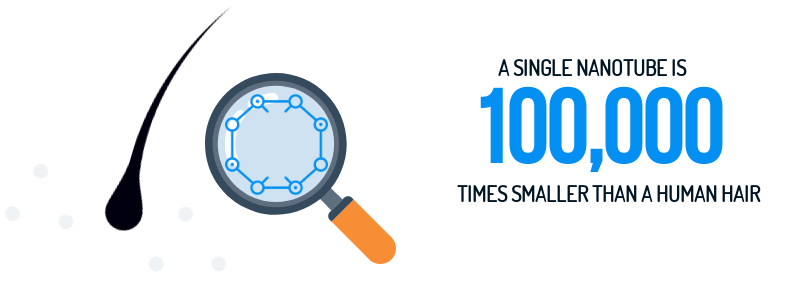
Nanosensors
Nanotechnology could be used in sensors to vastly improve biological imaging. Nanosensors could detect tiny changes in particles and molecular signals to identify health issues and make diagnoses. This could be incredibly useful in fields like oncology, where early detection is vital for improving survival rates and outcomes.
Treating Infections & Viruses
A different method could also be used for viruses. Gold nanoparticles could be attached to viruses, and these particles would then heat the viruses using infrared wavelengths, destroying the viral structure and treating the disease.
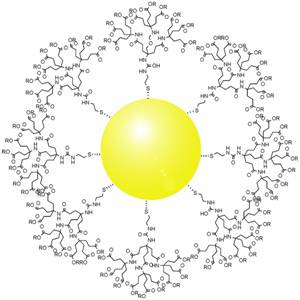
Gold nanoparticle
Safer Implants
Implants such as hip implants are very susceptible to becoming infected or developing scar tissue. This is often undetectable until it becomes a real threat, at which point the only course of action is often to remove and replace the implant.
With nanotechnology, this problem could be solved. Nanosensors could be used to detect whether cells around the implant are healthy, or if inflamed or infected tissue is present. They could also be programmed to release drugs to kill bacteria and reduce scar tissue.
Chemotherapy
Cancer treatments like chemotherapy often come with severe side effects for the patient, as the treatments can harm healthy cells as well as damaged ones.
Nanotechnology could improve this, allowing doctors to target individual mutated cells with incredible accuracy on a tiny scale.
Examples of Nanotechnology in Healthcare Today
Keystone Nano
Keystone Nano are developing nanoscale therapies to treat cancer more accurately and effectively. Their nanoparticles can deliver chemicals and pharmaceuticals very precisely, improving the efficacy of the drugs and reducing side effects. Their technologies can also be used in diagnostic imaging.
Vecoy Nanomedicines
Vecoy are designing nanoscale virus traps that have the ability to capture and destroy life-threatening viruses. The company has plans to work on developing treatments for viruses including HIV, Pandemic Influenza, and Hepatitis C. A huge benefit of these traps is the fact that they can target viruses before they affect cells.
Biogate
Biogate are designing nano silver particles that can be used in ultra thin coatings to protect surfaces from bacterial attack. Their HyProtect coating can be used to guard against implant infection, create better hernia meshes, and coat dental implants and orthodontic products.
Ageing Research
Who wants to live forever? Current research into the process of ageing could one day make this a reality. At the very least, we may see lifespans longer than the currently accepted limit on human age – 125 years old.

It’s been unclear to scientists what the exact process of ageing involves, although one theory suggests that it’s to do with the build up of ‘senescent’ cells over time. These are old cells which have deteriorated, meaning they no longer function correctly and also impair the cells around them.
Scientists believe that if we can reprogramme these ageing cells, we could rejuvenate the human body and even reverse the ageing process entirely. In the future, we could see the creation of anti degeneration drugs that revitalise your body.
Progress in Ageing Research
The University of Exeter
In August 2018, researchers at the University of Exeter successfully reversed the ageing of human cells by treating damaged cells with small amounts of hydrogen sulphide. This restored the cells’ ability to regulate genes and function correctly.
Further research into this field could completely alter reality as we known it, potentially allowing us to have longer, healthier lives with reduced signs of ageing.
Unity Biotechnology
Unity’s mission is to extend the human lifespan by developing medicines that halt, slow, and even reverse age-related diseases. This includes chronic illnesses such as arthritis, vision loss, and pulmonary diseases. They aim to do this by eliminating accumulated senescent cells, which could restore human tissue to a healthy state.
Brain Computer Interface
If technology straight out of science fiction appeals to you, the brain computer interface could be exactly what you’re looking for. This is the concept that one day our minds may be able to connect with artificial intelligence, robots, and even other minds directly, essentially superpowering the human brain.
This is often imagined as a brain ‘chip’, but businesses in this sector are hoping to develop less invasive methods like injectable sensors. It’s believed that this technology could augment our brains, increasing our capabilities and boosting our intelligence.
Brain computer interfaces and neuroprosthetics also have valuable medical applications. They have the potential to treat people with severe neuromuscular disabilities, including spinal cord injuries, ALS, and strokes. There have been successful experiments and prototypes in using brain waves to write messages with a virtual keyboard, control prosthetics and wheelchairs, and play brain games.
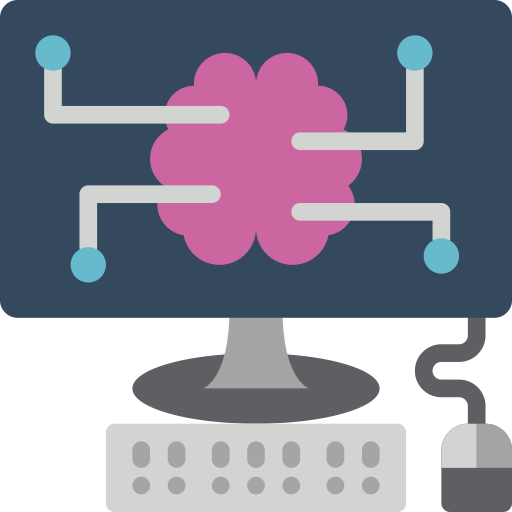
Brain Computer Interfaces in Healthcare Today
Neuralink
The latest brainchild by SpaceX entrepreneur Elon Musk, Neuralink’s mission is to develop implantable ultra high bandwidth brain-machine interfaces. They initially envisage using these devices to treat serious brain diseases, but in the future their goal is human enhancement. Musk believes these implants could augment the human mind, making us smarter, improving our memory, and aiding decision making.
Kernel
Kernel are creating neuroprosthetics that can augment the brain to improve mental function and treat disorders. They believe they can “radically improve and expand human cognition”, with technology that can access, read, and write from our brains. Founder Bryan Johnson believes that we will be able to combine human intelligence with artificial intelligence to achieve enhanced cognitive function.
Artificial Hippocampus
The hippocampus is the part of the human brain that deals with turning short term memories into long term ones. Theodore Berger at the University of Southern California is testing an artificial hippocampus, which could be used as a prosthetic to treat people with illnesses like dementia and restore their memory function.
We hope you’ve enjoyed this roundup of some of the most exciting developments in healthcare that could be arriving in the future! Which technology are you looking forward to the most?
** This post was originally published on https://www.uksmobility.co.uk/blog/2018/10/future-of-healthcare/

